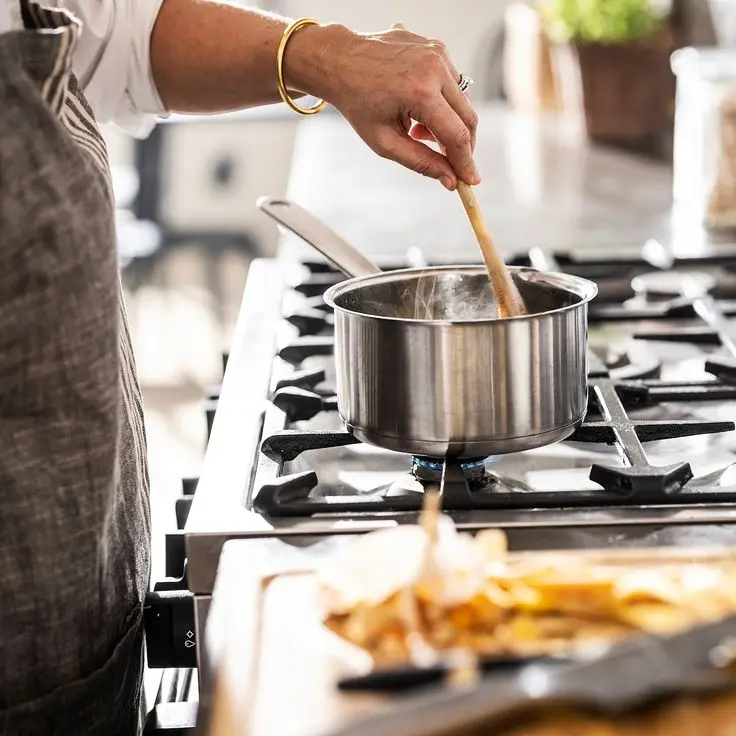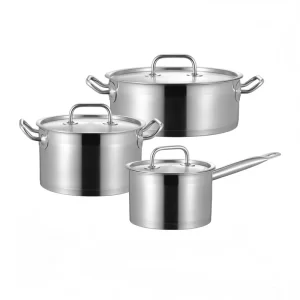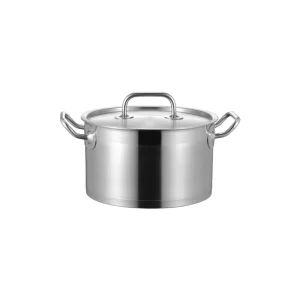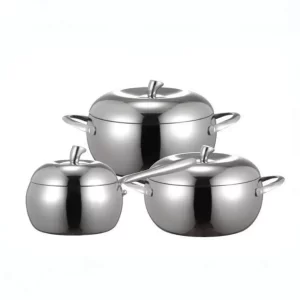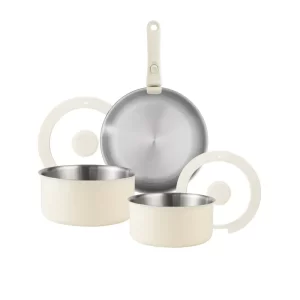Il est vrai qu'un bon ustensile de cuisine n'est pas seulement un outil, c'est une protection. Une casserole fragile peut laisser des toxines s'infiltrer dans votre soupe. Une poêle réactive peut rendre votre sauce tomate amère. Enfin, une casserole mal fabriquée peut se fissurer au milieu de l'ébullition, ruinant ainsi des heures de préparation. C'est pourquoi le choix d'un ustensile de cuisine n'est pas une question d'esthétique, mais de sécurité, de performance et de confiance.
Au Les chancesDepuis plus de 20 ans, nous proposons Service OEM/OEM et la conception d'ustensiles de cuisine qui ne se contentent pas de "fonctionner", mais qui protègent. En tant que fabricant leader d'acier inoxydable, nous avons établi une référence : Des ustensiles de cuisine aussi sûrs que fonctionnels. Que vous soyez un cuisinier à domicile préparant des crêpes le dimanche ou un chef de restaurant saisissant des coquilles Saint-Jacques pour 50 couverts, Chances est votre partenaire fiable en matière de restauration.
Table des matières
ToggleLes meilleurs matériaux pour batteries de cuisine démystifiés : Ce qu'il faut savoir
Tous les ustensiles de cuisine ne se valent pas. Décortiquons les matériaux les plus appréciés - ce qu'ils font de mieux, les points faibles et les raisons pour lesquelles la méthode de Chances est efficace.
Acier inoxydable Matériau
Le "cheval de bataille" de la cuisine professionnelle. Nous utilisons de l'acier inoxydable 304/316 de qualité alimentaire pour sa durabilité et sa résistance à la corrosion. Cet acier n'est pas réactif et n'absorbe pas les métaux dans les aliments acides tels que les tomates ou le vin.
Conseil : Recherchez une construction "tri-ply" ou "multi-ply". Cette structure se compose d'acier inoxydable et d'un noyau d'aluminium ou de cuivre pris en sandwich entre les deux, ce qui permet un transfert de chaleur efficace.
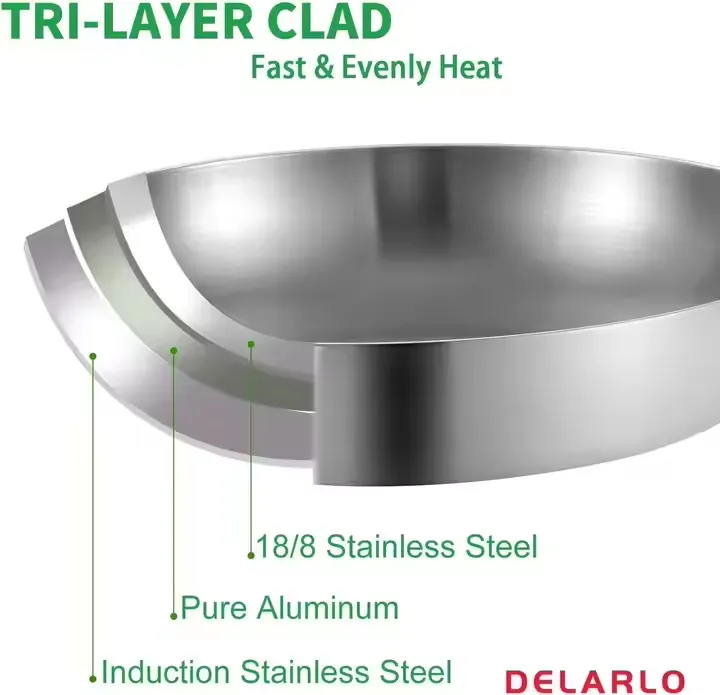
Fonte Matériau
Un classique pour une bonne raison. La fonte retient la chaleur comme une pro, idéale pour saisir les steaks ou faire mijoter les ragoûts. Mais elle demande beaucoup d'entretien : Elle rouille si elle n'est pas assaisonnée et elle est lourde. Le principe de l'assaisonnement consiste à enduire la surface de la fonte d'une fine couche d'huile alimentaire, puis à la chauffer à haute température pour que l'huile subisse une réaction de polymérisation et forme un film protecteur carbonisé résistant. Ce processus permet à la fonte de ne pas rouiller et de développer une surface antiadhésive naturelle - vous obtenez donc les avantages sans les inconvénients.
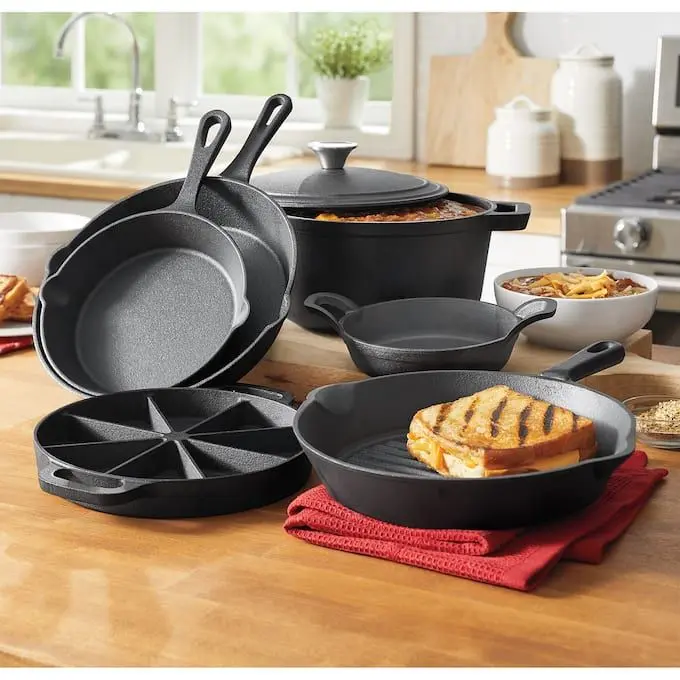
Aluminium Matériau
Léger et bon marché, l'aluminium conduit rapidement la chaleur. Mais l'aluminium bon marché s'infiltre dans les aliments acides et leur donne un goût métallique. L'utilisation d'aluminium anodisé - un procédé qui applique une couche d'oxyde protectrice sur le métal, le rendant non réactif et résistant aux rayures. Parfait pour les casseroles bon marché qui ne gâcheront pas vos sauces.
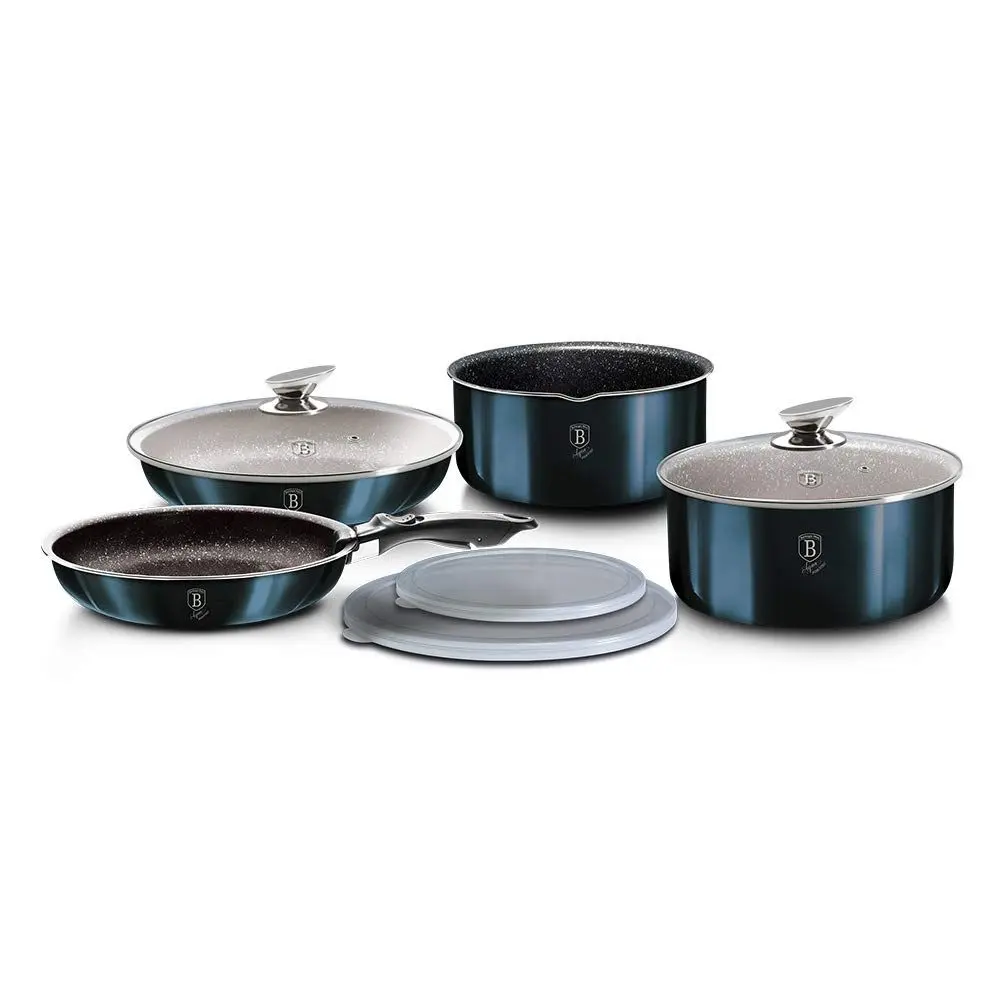
Céramique Matériau
Le "rêve des maniaques de la propreté". Les revêtements en céramique sont naturellement antiadhésifs, respectueux de l'environnement et exempts de PFOA/PTFE. Certains produits utilisent des émaux de qualité alimentaire qui passent au four jusqu'à 230 °C et sont faciles à nettoyer : il suffit d'un coup d'éponge.
Remarque : la céramique n'est pas faite pour saisir à haute température, mais elle est idéale pour les œufs, les crêpes ou la cuisson au four.

Facteurs à prendre en compte lors du choix du matériau des ustensiles de cuisine
Avant de cliquer sur "ajouter au panier", posez-vous les questions suivantes :
Conductivité de la chaleur et cuisson uniforme
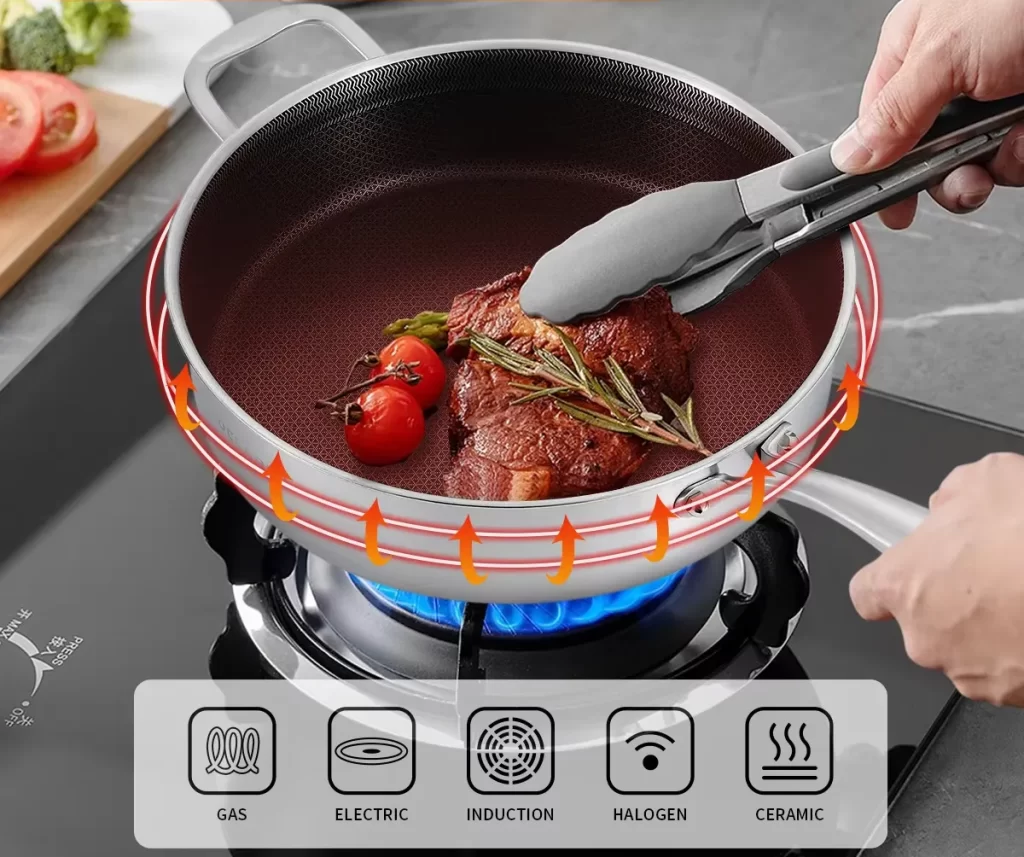
Avez-vous besoin d'une casserole qui chauffe rapidement, comme l'aluminium ou le cuivre, ou d'une casserole qui maintient la chaleur, comme l'acier inoxydable ou la fonte ? Pour les tâches précises, comme la préparation de sauces ou de bonbons, la conductivité rapide du cuivre est la meilleure. Pour saisir ou cuire lentement, l'acier inoxydable ou la fonte offrent une excellente rétention de la chaleur.
Sécurité et non-réactivité
Le matériau peut-il être utilisé en toute sécurité ? Fuit-il des métaux dans les aliments ? Chances se concentre sur les matériaux de qualité alimentaire. L'acier inoxydable choisi est approuvé par la FDA, le fer est traité pour éviter la rouille, les émaux céramiques sont testés pour les métaux lourds. Pas de compromis ici.
Entretien et nettoyage
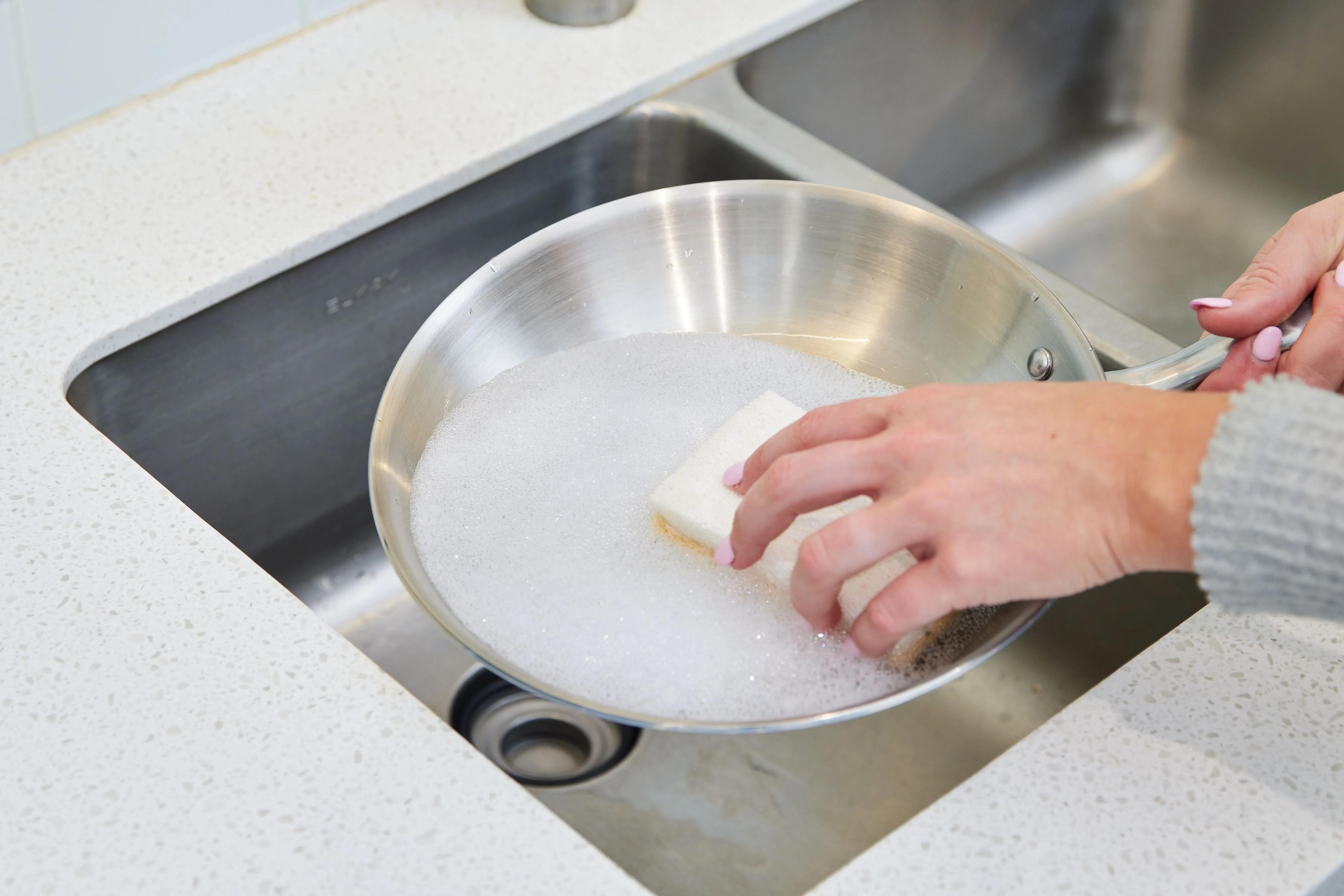
Combien de temps voulez-vous passer à frotter ? L'acier inoxydable peut être lavé au lave-vaisselle, mais le lavage à la main permet de conserver une belle finition. La fonte doit être séchée et huilée de temps en temps. La céramique demande peu d'efforts - évitez simplement les éponges rugueuses.
Longévité et retour sur investissement
Les ustensiles de cuisine bon marché peuvent vous faire économiser de l'argent dans l'immédiat, mais leur remplacement peut s'avérer plus coûteux au fil du temps. Par exemple, la longévité et le retour sur investissement de la fonte sont les plus élevés. Mais son entretien quotidien demande beaucoup d'énergie.
Pourquoi le chrome est-il le meilleur matériau pour les ustensiles de cuisine ?
Nous ne sommes pas une marque d'ustensiles de cuisine comme les autres : nous sommes un fabricant soucieux de la sécurité. Voici ce qui nous distingue :
Matériaux de qualité supérieure, sans danger pour les aliments
- Acier inoxydable 304: Résistant à la corrosion, stable et facile à nettoyer, c'est le choix le plus courant pour la fabrication de la plupart des ustensiles de cuisine.
- Acier inoxydable 316: Contient plus de molybdène, ce qui le rend plus résistant aux acides et à la corrosion. Convient aux ustensiles de cuisine haut de gamme et à la cuisson des fruits de mer.
- Acier inoxydable 430: Bon magnétisme et coût élevé, convient aux bases des cuisinières à induction ou aux bases des casseroles composites, mais présente une résistance à la corrosion plus faible.
Un contrôle de qualité rigoureux
Chaque casserole est testée :
La résistance à la chaleur, la résistance à la corrosion et la non-réactivité sont des tests que chacun de nos produits doit réussir. Nous avons rejeté les lots qui ne répondaient pas à nos normes, quitte à retarder la production. Parce que lorsque vous achetez Chances, vous achetez la tranquillité d'esprit.
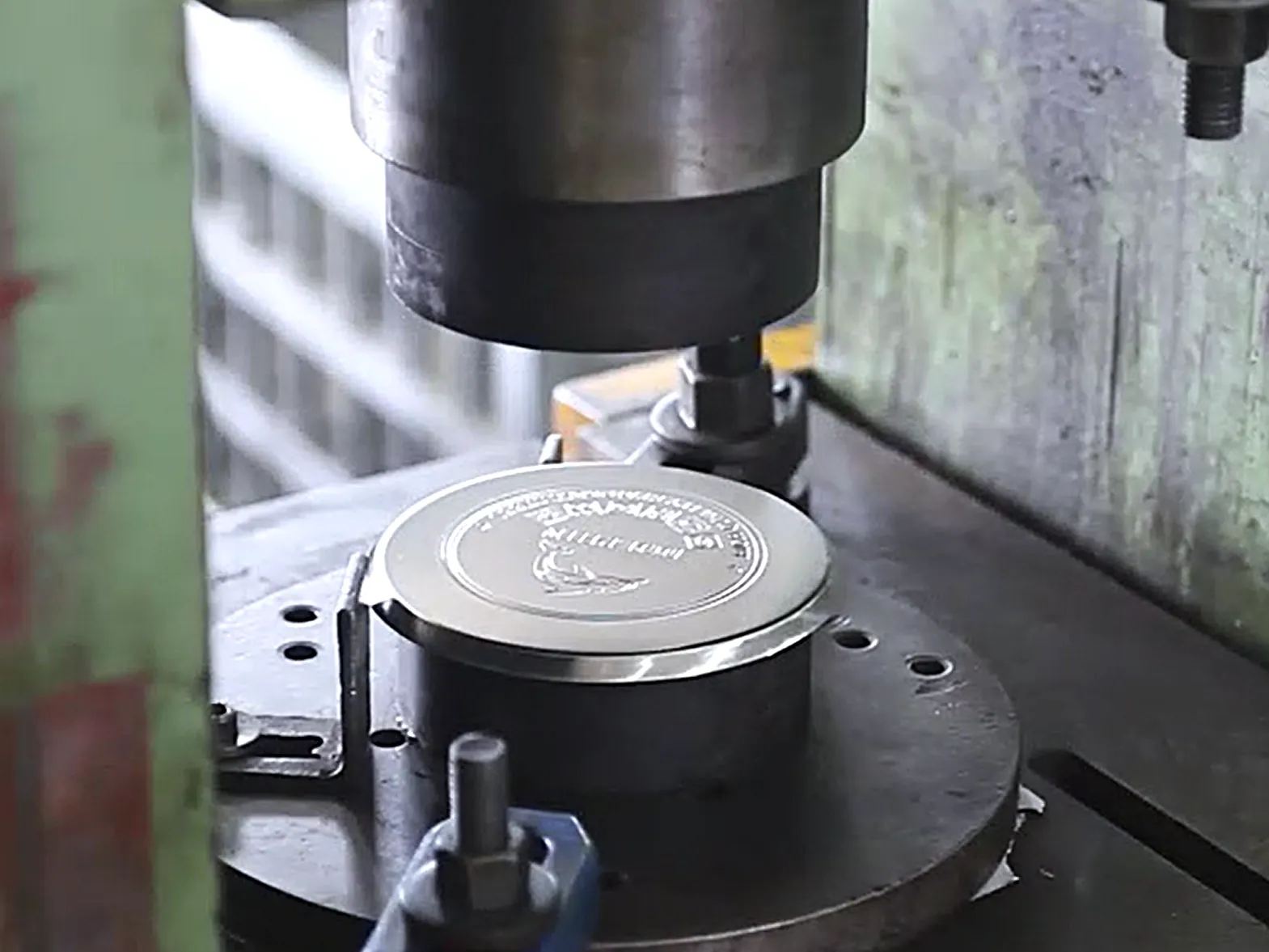
Recommandations pour différents utilisateurs : Une taille unique ne convient pas à tous
Votre style de cuisine dicte votre batterie de cuisine. Voici nos conseils sur mesure :
Cuisiniers à domicile
Conciliez sécurité, facilité d'utilisation et style. Nos ustensiles de cuisine en acier inoxydable sont parfaits pour les dîners de semaine : ils sont non réactifs, faciles à nettoyer et ont fière allure sur n'importe quelle cuisinière. Pour les œufs ou les crêpes, essayez notre gamme en céramique, naturellement antiadhésive, sans revêtement toxique.
Cuisines professionnelles
Priorité à la performance et à la durabilité. Nos ustensiles de cuisine en acier inoxydable peuvent être saisis à haute température et utilisés de manière intensive. Nous proposons même des tailles personnalisées pour les cuisines commerciales.
Restauration et hôtellerie à grande échelle
L'assurance de la sécurité en vrac est essentielle. Nous proposons des commandes en gros de nos tables à vapeur en acier inoxydable anodisé (résistantes à la corrosion et faciles à désinfecter). Notre équipe travaille avec vous pour concevoir une ligne d'ustensiles de cuisine qui réponde à vos besoins en termes de volume, de budget et de sécurité.
Conclusion
Au Les chancesDepuis plus de vingt ans, nous concevons des ustensiles de cuisine qui allient sécurité et performance sans compromis. Que vous soyez un cuisinier amateur en quête de simplicité, un chef professionnel exigeant de la précision ou une entreprise hôtelière privilégiant la fiabilité des produits en vrac, Chances est à la hauteur.
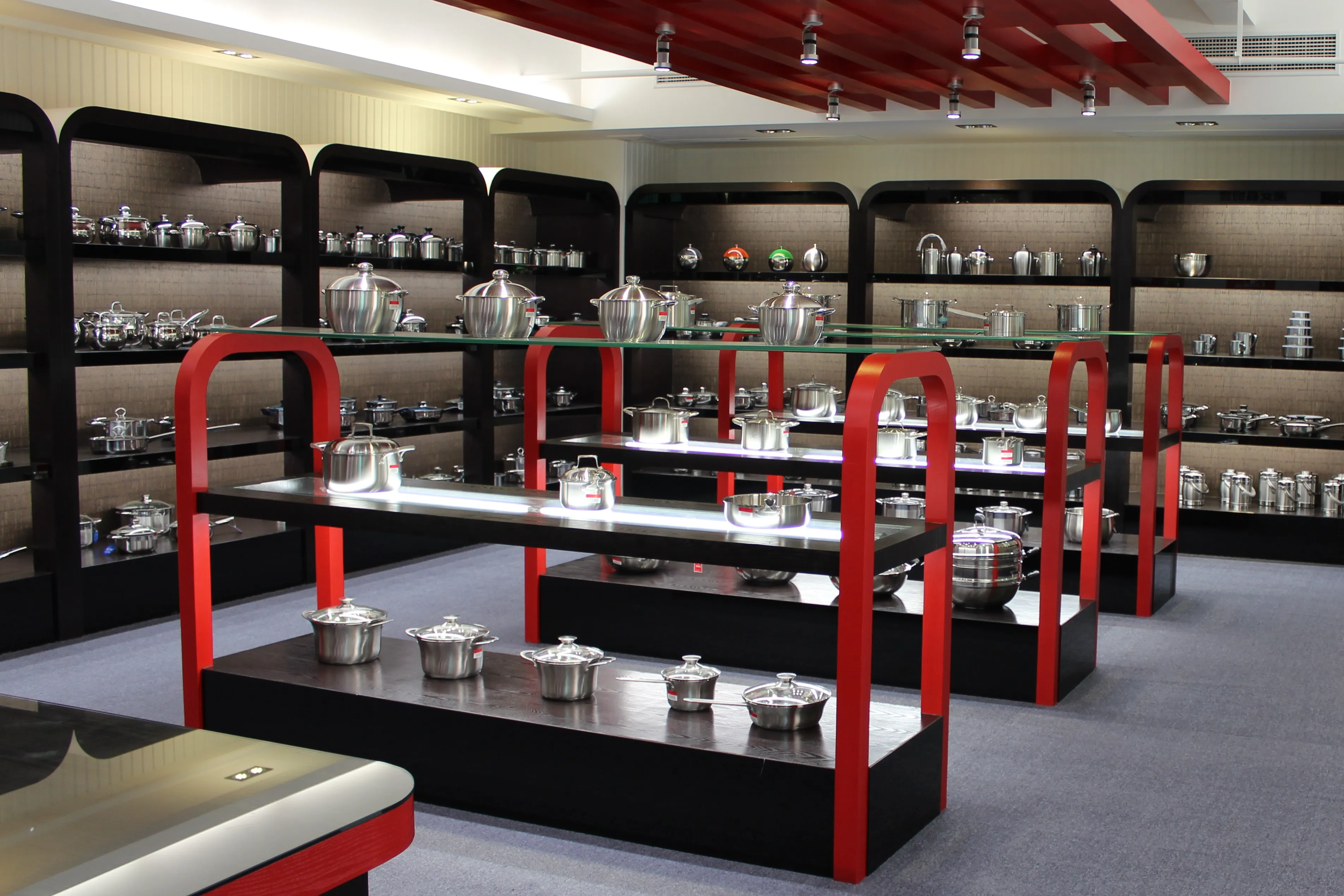
Nous avons adapté des solutions personnalisées à vos besoins : l'acier inoxydable pour les dîners de semaine, la fonte pour les festins du week-end, la céramique pour les petits déjeuners sans stress, et les commandes en vrac pour la restauration à l'échelle. Parce qu'il n'y a pas deux cuisines identiques et que leurs ustensiles de cuisine ne doivent pas l'être non plus.

